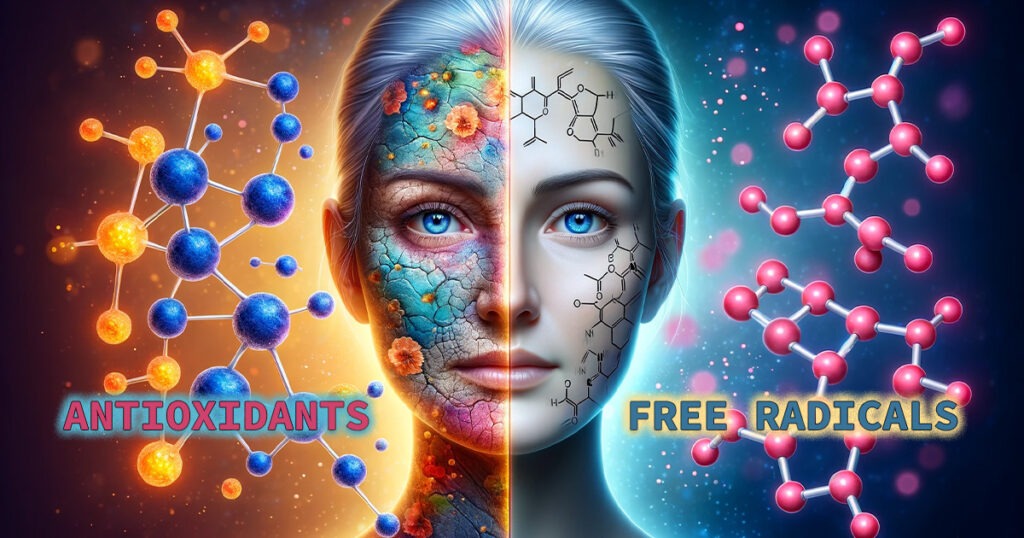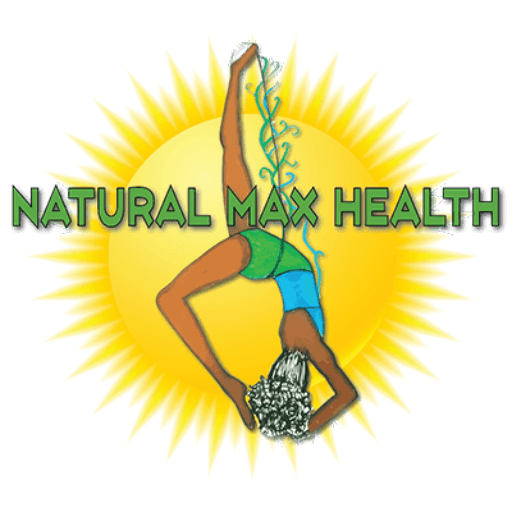What are Antioxidants and Free Radicals Anyway?

Antioxidant is a word you have likely heard a million times. We are told that certain foods, such as berries, are high in antioxidants and that we need them to keep us healthy. But what exactly are antioxidants, and how do they keep us healthy? Before we discuss that, you guessed it, let’s go over a few terms that you’ll need to familiarize yourself with.
- Atoms – Think of atoms as the fundamental building blocks of matter, the basic ingredients that make up everything you see around you. Each atom consists of a central core called the nucleus, which contains positively charged particles called protons and neutral particles called neutrons. Picture the nucleus as the heart of the atom, holding most of its mass and positive charge tightly together. Surrounding this nucleus are negatively charged particles called electrons, which zoom around in specific paths called electron shells, similar to how planets orbit the sun. Despite these swirling charges, atoms remain electrically neutral overall, as the number of protons in the nucleus balances out the number of electrons orbiting around it.
- Molecules – A group of two or more atoms held together by attractive forces known as chemical bonds. For example, two atoms of hydrogen and one atom of oxygen react to form water.
- Free radicals – Form when one molecule steals an electron from another molecule. Molecules do not appreciate it when they are missing an electron, so they steal an electron from another molecule. Misery loves company, right? So, this pattern continues, and we now have molecules that are missing electrons, damaging other molecules by stealing their electrons. It’s a vicious cycle that results in much harm to the body.
- Oxidative stress– occurs when free radicals overwhelm the body’s ability to regulate them.
- Pro-oxidants– These are chemicals that induce oxidative stress or inhibit antioxidant systems.
Now, let’s put it all together.
The Gentle and Malicious Side of Free Radicals
Free radicals—are often perceived as horrible monsters wreaking havoc on our health—and they are, but they also have a bright side. Let’s explore the gentler side of free radicals for a moment.
Good Free Radicals
Free radicals occur naturally in the body and are the byproducts of the body’s chemical processes, such as digestion and metabolism. Christopher Wanjek, a health and science journalist, wrote, “The body’s ability to turn air and food into chemical energy depends on a chain reaction of free radicals. Free radicals are also crucial to the smooth operation of the immune system, floating through the veins and attacking foreign invaders.”
Bad Free Radicals
Although free radicals have a good side, too much of anything can be harmful. When free radicals overwhelm the body’s ability to regulate them, oxidative stress can occur. Oxidative stress occurs when there’s an imbalance between free radicals and antioxidants in the body. Free radicals are highly reactive molecules that can damage cells, proteins, and DNA. According to the Live Science website, it is helpful to think of free radicals as the waste produced by various chemical reactions that cells undergo. When they build up and accumulate, they can harm the same cells that created them. Without antioxidants, bad free radicals would cause serious harm, eventually resulting in death. They are like a cleanup crew for your health.
How We Develop an Imbalance of Free Radicals Leading To Oxidative Stress
Although free radicals are produced naturally in the body, other factors can accelerate their production, such as:
- Environmental pollutants – from automobile emissions, power plants, burning garbage, and cigarette smoke.
- Some medications – certain drugs, such as cyclosporine, tacrolimus, and bleomycin, are known to be nephrotoxic because they increase free radical levels and oxidative stress via lipid peroxidation, according to the National Library of Medicine.
- Chronic stress – stress causes free oxygen radicals to increase due to high respiratory oxygen intake and metabolic turnover.
- Supplementary antioxidants – Research indicates that taking high doses of antioxidant supplements does not prevent free radical damage and could potentially cause harm.
- Excessive amounts of vitamin C – normal concentrations are beneficial, but increasing their levels through supplementation can result in them becoming harmful pro-oxidants.
Excessive exercise – such as running marathons and other extreme endurance exercises requires maximal oxygen consumption, the highest rate at which oxygen can be taken in and consumed by the body. Breathing increases from 15 times per minute at rest to 40-60 times per minute while exercising, which increases oxidative stress. - Poor diet – processed meats, fried foods, cooking oil, alcohol, and high glycemic foods like refined sugar and carbohydrates are likely to produce free radicals. When you take food high in oxalic acid into consideration, determining healthy foods can be tricky. However, foods high in sulfur, such as onions, broccoli, red cabbage, leeks, asparagus, and garlic, are excellent sources of antioxidants.
- Aging – Although it’s inevitable, aging can also cause oxidative stress because as we get older, we lose the ability to fight off the effects.
What Antioxidants Do
Antioxidants are molecules that protect tissues of the body from damage by oxidative stress. An antioxidant molecule is stable enough to donate an electron to a rampaging free radical and neutralize it, thus reducing its ability to cause damage. While oxidation is a natural and necessary process, oxidative stress harms the body. This condition can lead to many symptoms if not corrected, such as:
- Alzheimer’s
- Autoimmune and inflammatory disorders
- Heart disease
- Chronic fatigue syndrome
- Memory loss or brain fog
- Inflammation
- Parkinson’s disease
- Lupus
- Diabetes
- Neurological dysfunction
- Premature aging
- Headaches
- Muscle and joint pain
- Some types of cancer
Antioxidants help protect bodily tissues from damage by oxidation, and fortunately, our body naturally produces the best antioxidants of them all.
Glutathione, the Ulitmate Antioxidant
Introducing glutathione, hailed as the mother of all antioxidants, the ultimate guardian, the supreme detoxifier, and the orchestrator of our immune system’s harmony. This powerhouse molecule is an indispensable ally in our body’s battle against illness and premature aging. Shockingly, scientific studies discovered that many individuals suffering from serious health conditions have insufficient levels of glutathione. Regrettably, the prevalence of poor dietary habits and the onslaught of environmental toxins have also left most of us deficient.
Glutathione is a substance made from the amino acids glycine, cysteine, and glutamic acid. It is produced by the liver and involved in many body processes. Glutathione is involved in tissue building and repair, making chemicals and proteins needed in the body and aiding our immune system functions. The antioxidant process of glutathione occurs within our cell’s mitochondria as it neutralizes or renders inert free radicals and toxins very efficiently.
Thankfully, our bodies have natural antioxidant defenses to prevent the harmful effects of free radicals. Therefore, providing it with the right building blocks to replenish our natural antioxidants optimally is essential. Of course, that mainly comes down to proper diet. The following is a list of natural things you can do to help with optimal glutathione levels within your body, as found in the Healthline website article “10 Natural Ways to Increase Your Glutathione Levels.” Please visit the article link for more detailed information regarding the list below:
- Eat sulfur-rich foods
- Increase your vitamin C intake
- Add selenium-rich foods to your diet
- Eat foods naturally rich in glutathione
- Supplement with whey protein
- Milk thistle (may help)
- Turmeric extract
- Get enough sleep
- Exercise regularly
- Avoid drinking too much alcohol.
While the body produces its own forms of antioxidants like glutathione, it is not always enough to combat the level of bad free radicals the average person experiences. So, join me in my next article, where we will discuss how to incorporate more antioxidants into your diet. Hopefully, this article gives you a clearer picture of what occurs within your body and what you can do to improve your health. If you found this article helpful. Please share it with someone that you think may be blessed by it. As always, take care of yourselves, and happy healing. See you next time.
Related Links
Unlocking Mitochondria Secrets: Energy Powerhouses Explained
The Human Cell: Understanding Your Body at the Cellular Level
The Truth About Oxalic Acid: Is Your Diet Putting You at Risk?
Understanding CIRS: Clarity for Your Symptoms
